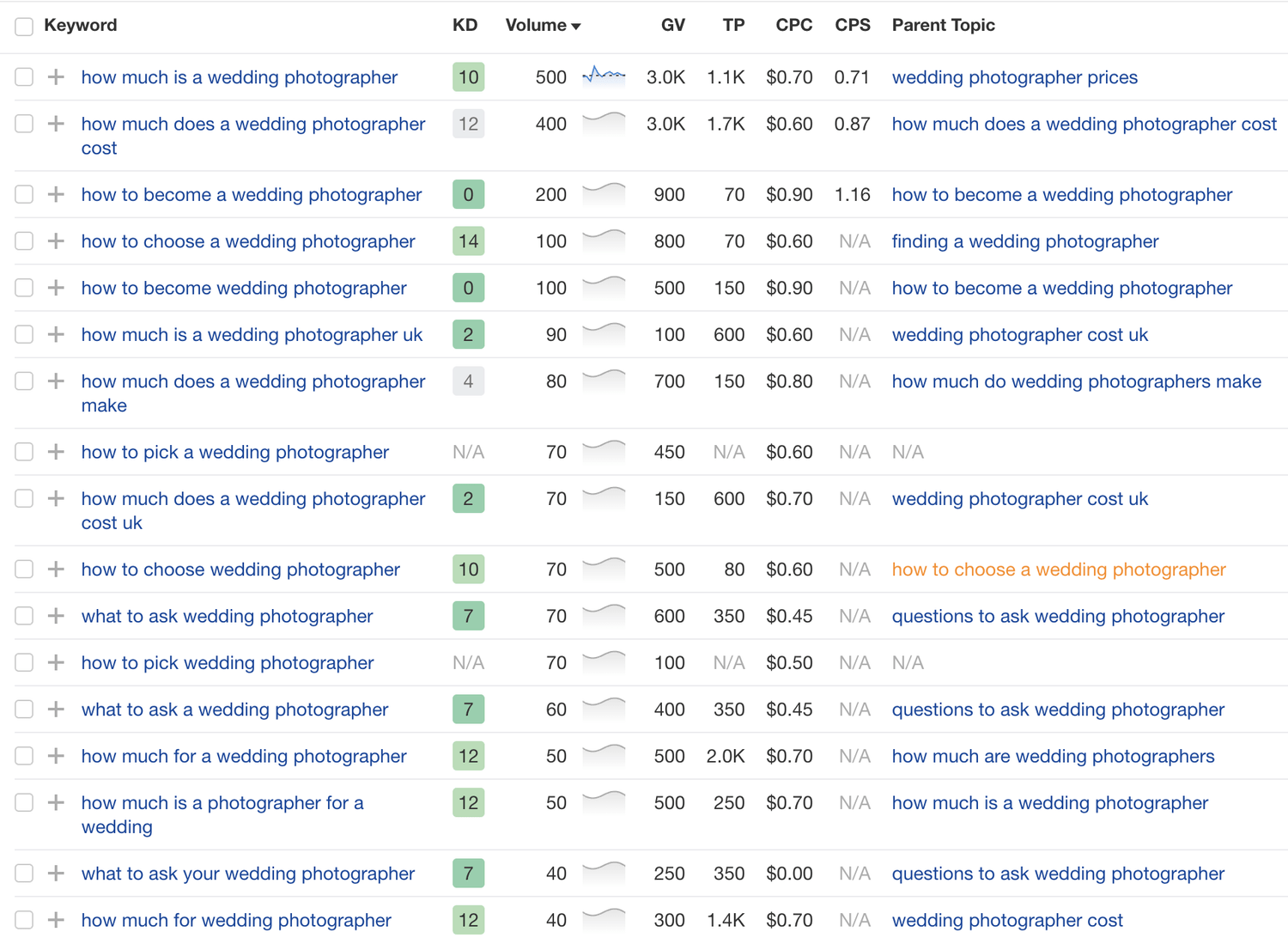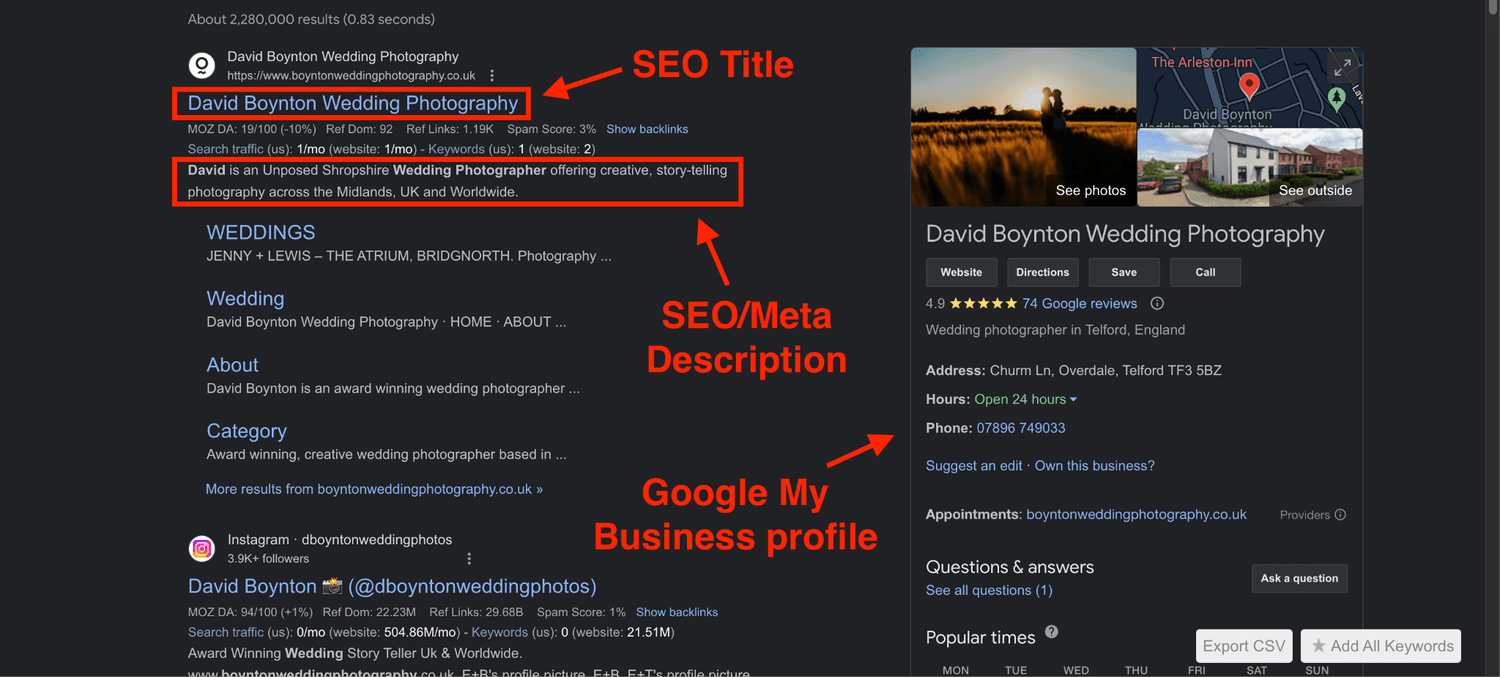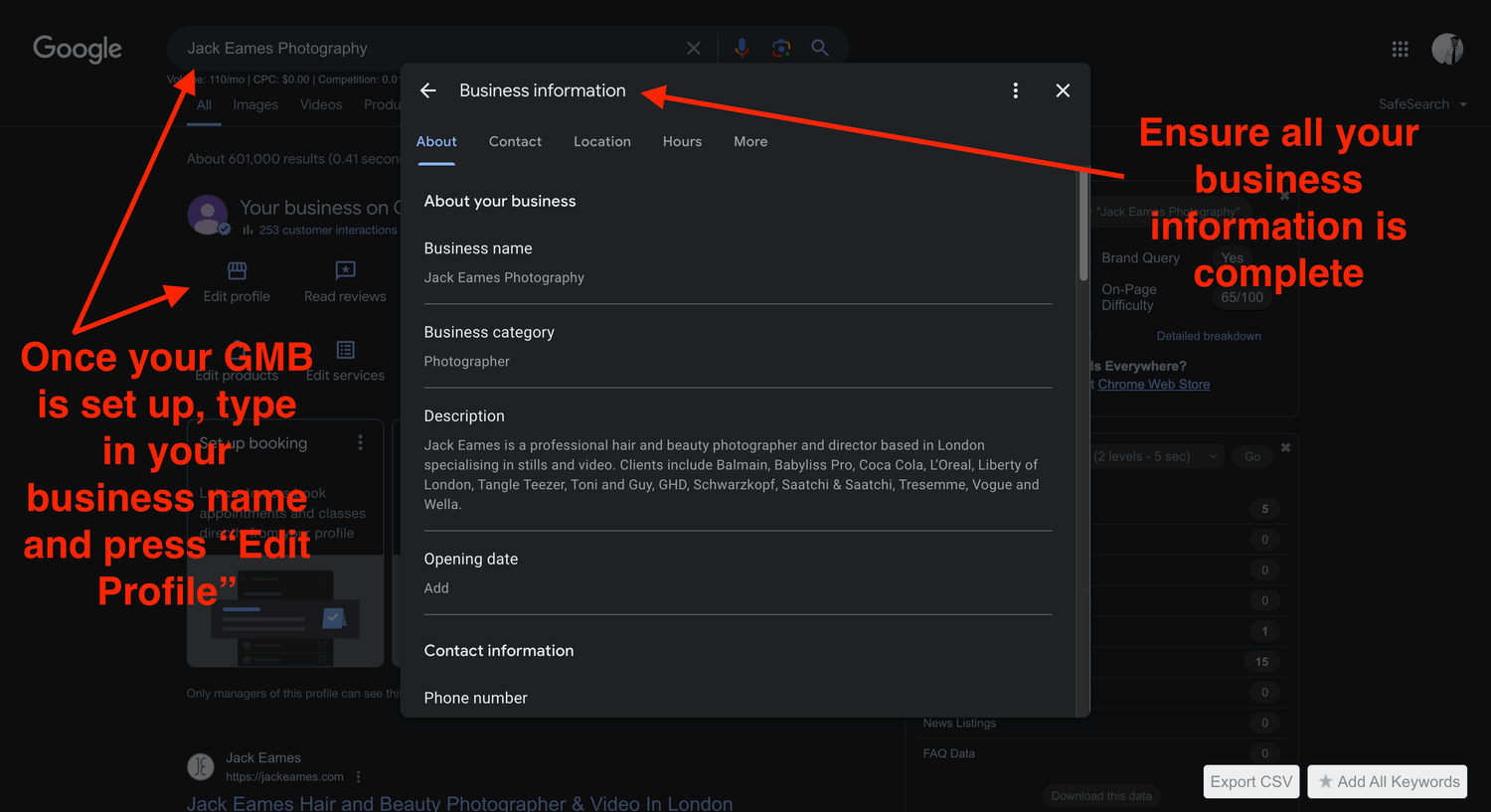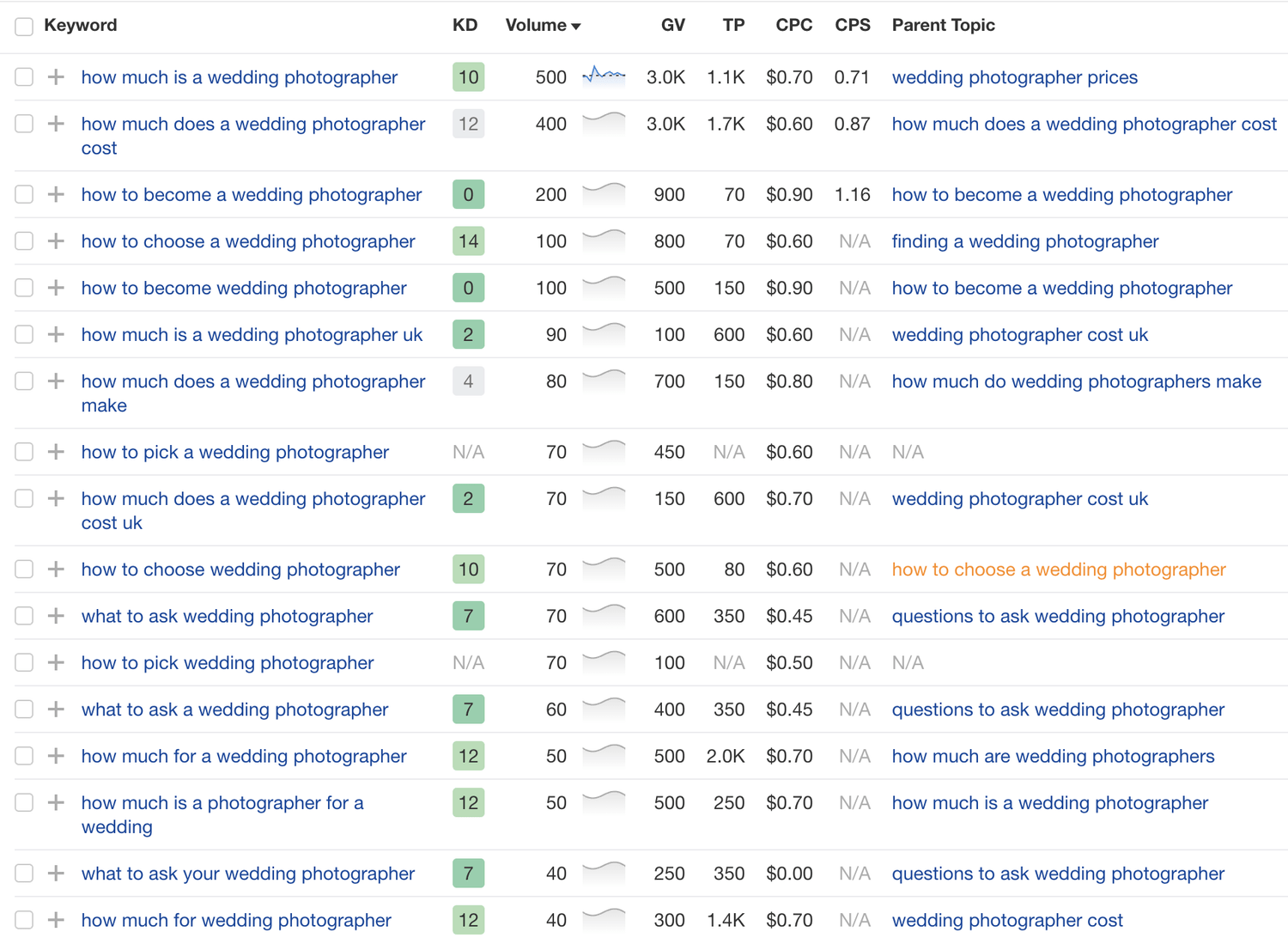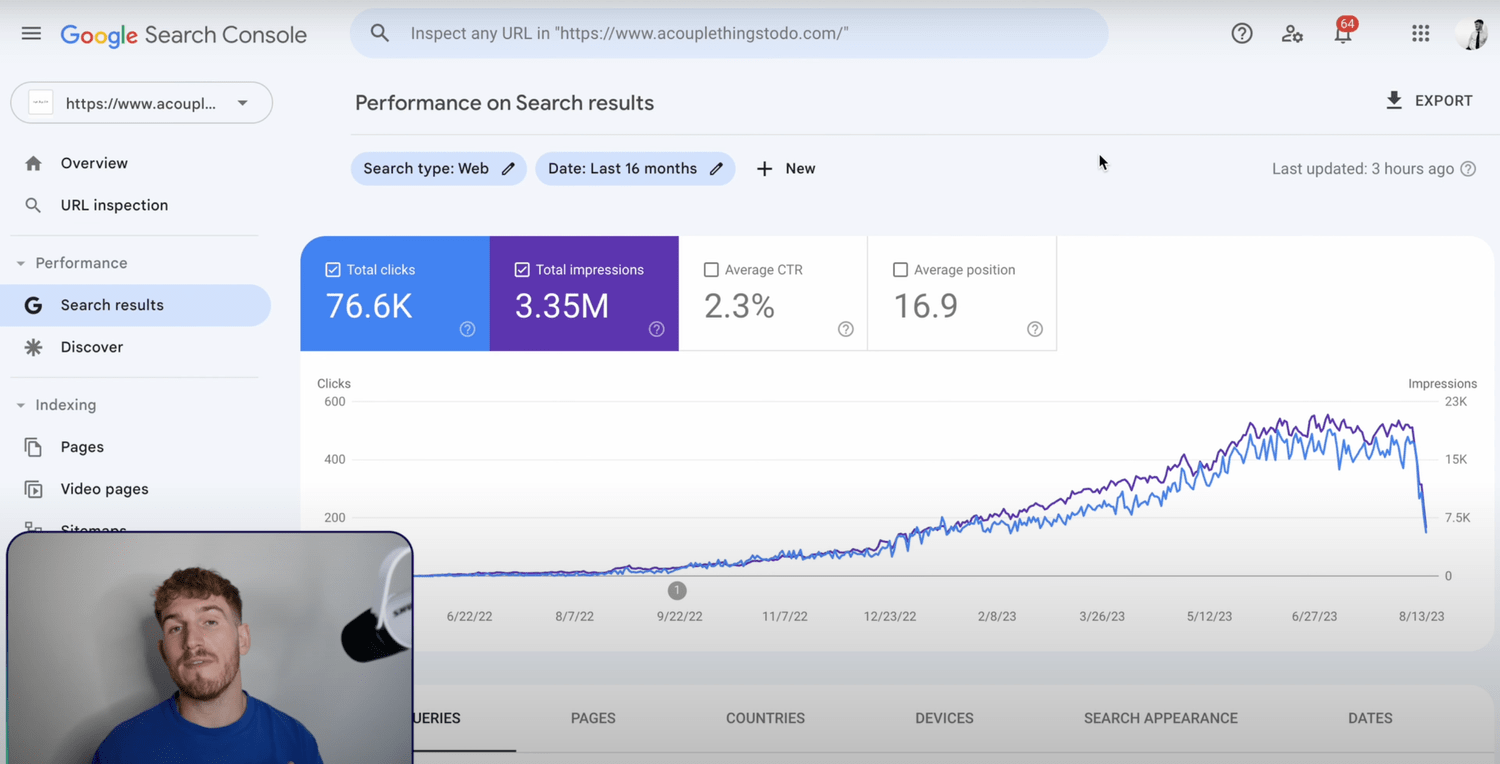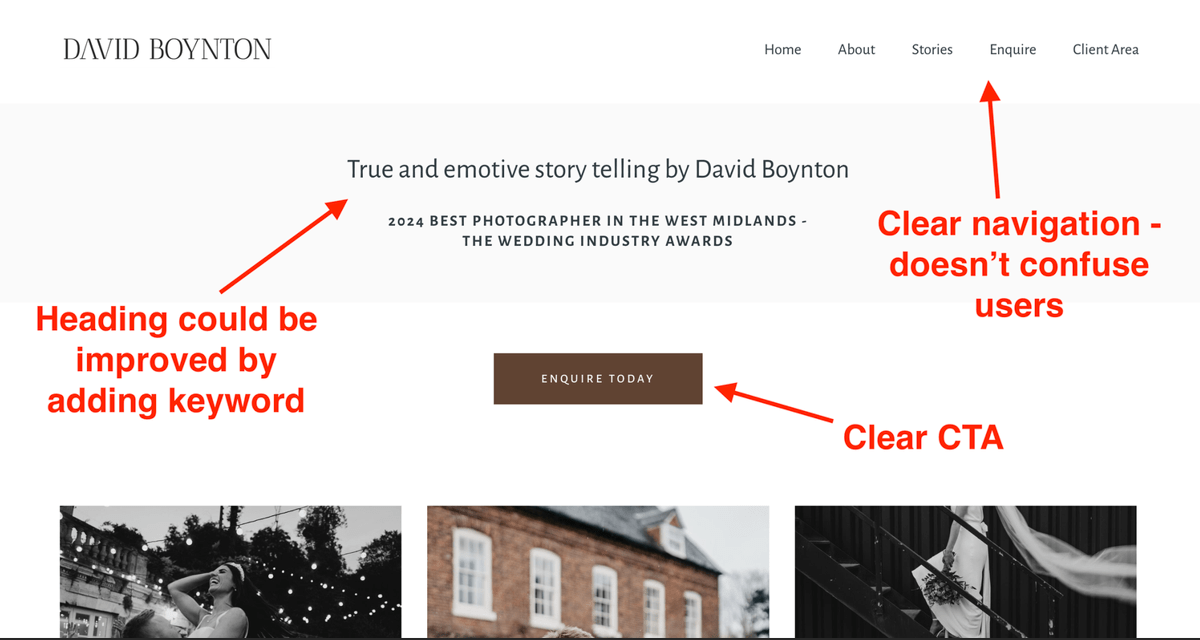SEO for Wedding Photographers: Rank #1 on Google [2024]
You’re a wedding photographer, so you know how competitive the industry is these days. Everyone and their cousin seems to have a DSLR and attempts to do what you’ve mastered over the years. To come out on top of the competition and get to shoot in exclusive venues, you need a consistent lead generation channel other than referrals from within your circle — this is where traffic from Google comes in!
Generating leads from Google is only possible with good SEO for wedding photographers. In fact, a whopping 75% of Internet users click only on the results on Google’s first page. If you can get your website to rank on page #1 of Google for terms like “wedding photographer [your city name],” then you have a high chance of securing bookings via organic search.
SEOSpace has helped several businesses like The Adore Girls go from being hidden on search engines to the top of page 1 for target search terms, leading to inbound bookings. As experts in search engine optimization (SEO) with the leading Squarespace SEO plugin, we’re in the perfect position to recommend the latest SEO tips and tricks that can help you generate high-quality leads and increase calendar bookings! Let’s get started!
SEO for Wedding Photographers Contents
What Is Wedding Photographer SEO?
The Ultimate 9-Step SEO for Wedding Photography Guide for Beginners
Step 1. Find those wedding photography keywords your customers search for.
Step 2. Do competitor research on other wedding photographers.
Step 3. Utilize on-page SEO best practices.
Step 4. Set up your Google My Business profile.
Step 5. Create compelling content/blog posts.
Step 6. Connect Google Search Console and Analytics.
Step 7. Build backlinks and citations.
What Is Wedding Photography SEO?
SEO for wedding photographers is all about increasing your online visibility to attract more clients. As a wedding photographer, you’re not just selling pictures — you’re selling a service, an experience, and, most importantly, your unique vision and style. So, if you’re wondering what SEO is, it helps to showcase that to the world by improving your ranking on search engine results pages (SERPs).
When your website ranks high for relevant search terms, it’s like having a billboard in the busiest part of town; it’s the digital equivalent of word-of-mouth marketing. But instead of relying on a few past clients to spread the word, you’re reaching out directly to hundreds, if not thousands, of potential clients, actively searching for a wedding photographer. This is an avenue to get inquiries to shoot weddings in exclusive locations that are willing to pay your rate!
Tip: If you’re just getting started with building your website, we recommend opting for these SEO templates for wedding photographers. They feature a clean, SEO-ready design that guides you through implementing key on-page SEO elements that ensure your website ranks on search engines.
You’re probably wondering, “Can I do SEO all by myself?”
Yes, you can! Stick with us as we walk you through the various steps you can take to fill your calendar with inbound bookings via an effective SEO strategy for your wedding photography website.
The Ultimate 9-Step SEO for Wedding Photography Guide for Beginners
Regardless of the platform you’re using to host your wedding photography services or business website—be it WordPress or Squarespace—follow these 9 SEO tips for wedding photographers:
Find those wedding photography keywords your customers search for.
Do competitor research on other wedding photographers.
Utilize on-page SEO best practices.
Set up and prioritize your Google My Business profile.
Create compelling content/blog posts in the wedding photography niche.
Connect Google Search Console and Analytics.
Build backlinks and citations.
Optimize user experience to improve conversion.
Build a long-term SEO strategy.
Step 1. Find those wedding photography keywords your customers search for.
Keyword research is the foundation for ranking on search engines like Google. As an SEO expert, we have optimized several web pages with keywords and know the secrets to finding the right ones for your wedding photography business.
To start, you’ll want to determine your service/money pages, i.e., those pages on your site that you want to rank for terms potential clients would search for when ready to hire a wedding photographer (otherwise known as keywords). These could be pages like “wedding photography [your city name],” “wedding photography packages,” or “wedding photography pricing.” For each money page, find at least 3 main keywords or phrases to target.
Use tools like Keywords Everywhere and Ahrefs to find keywords with high search volume and low difficulty. However, ensure the keywords are relevant to your location and the wedding photography niche.
You’ll also want blog pages that rank for informational wedding photography keywords, like:
How much is a wedding photographer?
How to choose a wedding photographer.
What to ask wedding photographer.
In a nutshell, having a solid keyword plan is the foundation for building a successful SEO strategy, but it’s equally important to study your competitors.
Step 2. Do competitor research on other wedding photographers.
After identifying relevant wedding photography keywords, the next step is researching your competitors. This not only helps you find more relevant keywords but also helps you understand what they are doing right and what you must do to be better.
Study their website.
Checking out the websites of wedding photographers who rank well for your target keywords is key. Look at their page titles, headers, content, and metadata to see how they’re optimized. Notice what wedding photography keywords they target and how often. Also, see how they structure their content and build internal links. All of these factors contribute to their success and are worth emulating if you want to outrank your competitors on Google.
Check their social media presence.
Evaluate your competitors’ social media profiles and engagement. A strong social presence, especially on Instagram and Facebook, gives search engines more signals about their authority and expertise in the wedding photography niche, and they’re worth emulating.
Gather as much insight as you can.
Don’t just look at the photographers ranking in the top spots; check out some in positions 4 through 10 as well. They’re equally doing something right in the SEO strategy and may provide some fresh ideas. More specifically, if a competitor is ranking on page 1 but has low domain authority, they likely have great on-page SEO that you can mimic on your website (More on this in the next section).
The key is not to copy what your competitors are doing but rather learn from their successes and see where there are opportunities to stand out. Maybe they’re missing some valuable keywords or haven’t optimized their home page content as much as they could. Find the gaps you can fill to gain ground.
Step 3. Utilize on-page SEO best practices.
On-page SEO is the process of ensuring your website pages follow SEO best practices to become more visible on search engines. These best practices include optimizing the page titles and meta descriptions, naturally including wedding SEO keywords in the header, and optimizing images.
Optimize page titles and meta descriptions.
The page title and meta description are the first things search engines and searchers see about your page. Make sure each page has a unique title that includes your target keyword while not exceeding 50–60 characters. The meta description should be between 150 to 160 characters and give a compelling summary of the page content with a call to action. Limiting your titles and descriptions to the recommended character count ensures they’re fully visible in search results, and not cut short.
Example website - Wedding Photographer Shropshire
Use your keyword in headers.
Having your target keyword in the H1 and H2 headers helps search engines determine what the page is about. However, it’s important not to stuff the content with keywords unnecessarily but to naturally include them. For a wedding photographer, using keywords like “wedding photographer [your city name]” or “wedding photography [your city name]” in headers is ideal.
Add alt text to images.
Alt text gives context to images on your site for search engines and accessibility. Make sure each image has a unique alt-text description that includes your target keyword. Describe images with sentences like “bride and groom smiling on their wedding day” or “bridal party celebrating at a wedding reception.”
Consistency and patience are key, so keep optimizing and publishing new content to build authority in search engines. Before you know it, you’ll be at the top of the list for all those wedding photography keyword searches!
Top tip: One thing we see many wedding photographers do wrong is upload oversized images onto their site - we know that your photos are your work, but uploading images that are multiple mb will slow down your site, hurting your rankings.
Step 4. Set up and prioritize your Google My Business profile.
Statistically, about 6 out of 10 consumers contact a business directly using the information found on their Google My Business (GMB) profile. Hence, it’s important to claim your business profile on Google.
Once you’ve claimed and verified your Google My Business (GMB) profile, it’s time to adopt a local SEO strategy. This means optimizing your Google Business profile to match wedding photography SEO best practices, ensuring you rank well in local search results.
Here are 6 key steps to follow:
a. Fill out all profile details.
Provide complete and accurate information for your business name, address, phone number, website, business hours, and business category (The correct category should be Photography & Videography >>> Wedding Photography). Double-check that everything is spelled properly.
b. Upload high-quality photos.
Add professional photos of your studio space, bridge and groom photos, headshots, behind-the-scenes wedding photos, equipment, etc. Add as many photos as you can, and ensure photos are high resolution, visually appealing, and help portray your brand.
c. Write an engaging business description.
Your business description is valuable real estate, so it’s important to make the most of it. Mention your style, experience, awards or credentials, and the locations you serve. Keep sentences short and easy to read while including some keywords like “wedding photographer [your city name],” “wedding photography,” etc.
d. Add attributes like parking options and payment methods.
Including attributes like “street parking,” “private parking,” “credit cards accepted,” or “online payments accepted” can influence potential clients. Only choose attributes that actually apply to your business.
e. Post regular updates, photos, and offers.
To appear frequently in local search results, post updates, behind-the-scenes photos, wedding photos, promotions, or events regularly on your website. Mention your location and use keywords when possible. Updates with photos can get you more views and engagement, given your business is Photography.
f. Build reviews from happy clients.
Google prioritizes businesses with positive reviews in its ranking, so aim to gain as many 5-star reviews as possible. Once you’ve photographed some weddings, ask your clients to leave an honest review on your GMB profile. But don’t compel them to give you a particular rating; focus on improving your service instead.
Reviews generally boost your local ranking and build credibility. Even if you receive a negative review, politely respond to show you value customer feedback.
Step 5. Create compelling content/blog posts.
Creating compelling blog content is key to ranking well in search engines like Google. At SEOSpace, we analyzed over 21,000 websites to determine what makes the top 10% stand out. We found that high-quality, in-depth posts tend to rank the highest.
So, how do you become a part of these 10%?
Consider the following 4 content creation tips:
a. Write about what you know.
When doing SEO for wedding photography, ensure your content focuses on your niche. Share tips, behind-the-scenes stories, photography equipment reviews, and advice for couples. This establishes you as an expert in your field.
Focus on providing expert information and advice on topics related to your field. The image below provides some inspiration.
b. Provide value to readers.
Google rewards pages that people spend time on. To reduce the bounce rate on your website pages, offer useful advice and actionable takeaways to keep visitors engaged.
For example, include:
A checklist for couples to prepare for an engagement shoot.
A comparison of the best cameras and lenses for wedding photography.
A timeline of a typical wedding day from a photographer’s perspective.
c. Optimize for search with keywords.
Use important keywords for your niche across your content. This includes terms like “wedding photographer,” “engagement photos,” “bridal portraits,” “wedding photojournalism,” etc. You can also include synonyms for keyword ideas and related phrases.
d. Keep content fresh.
Update your website with new blog posts at least once a month to stay relevant. Over time, older evergreen content will continue to rank while new posts boost your authority.
By focusing on these elements, you’ll craft content that ranks well in search and provides real value to your readers. Keep it up, and you’ll establish yourself as an expert in wedding photography SEO.
Step 6. Connect Google Search Console and Analytics.
Connecting Google Search Console and Google Analytics is crucial for any SEO photographer strategy.
Taking the time to link these two free tools allows you to analyze search performance, monitor user behavior, and troubleshoot issues quickly:
See search performance.
By connecting GSC and Analytics, you’ll gain valuable insights into how people find your website. See which search queries are driving the most traffic, impressions, and clicks, as well as which pages rank for sought-after keywords. Use this data to optimize your on-page SEO and content creation (discussed above).
Track user behavior.
Analytics provides a wealth of information about how visitors interact with your site. See which pages get the most traffic and highest bounce rates for opportunities to improve user experience and engagement. Monitor how people navigate from the search results to key pages on your site. You can then use this information to strengthen your internal linking and on-page optimization.
Quickly diagnose issues.
If you notice a major drop in search traffic or ranking for key terms, the data in GSC and Analytics can help determine the cause. Look for changes in search queries, clicks, impressions, user behavior, or technical errors around the time of the drop. The combined data may reveal issues with content, internal linking, page speed, or website errors that need to be addressed. Diagnosing and fixing problems quickly is key to minimizing the impact on your search engine rankings and performance.
Tip: Check out the video below outlining proven tips and tricks that can help you use Google Search Console to boost your website traffic for increased inbound bookings.
Step 7. Build backlinks and citations.
High-quality backlinks are one of the most important ranking factors Google considers. Domains with more backlinks tend to rank higher in search engines like Google. So, a good way to ensure successful SEO for photographers is to focus on building backlinks and citations to your website.
Building Backlinks
Backlinks (or inbound links) refer to those links from other websites that direct people to your website. The more high-quality backlinks you have, the more authority search engines will grant to your website. But not just any backlinks will do; focus on earning backlinks from authoritative websites in your industry, like wedding blogs, photography associations, and reputable directories.
Offer value to others by creating useful, insightful content. When writing a blog post, include actionable tips, behind-the-scenes photos, details of your creative process, or educational videos. Reach out to influencers and ask if they’d be interested in featuring your content. Pitch yourself as an expert source to journalists and bloggers — the key is making it easy for others to want to link back to you.
Getting Citations
Citations refer to mentions of your business name, address, and contact information on directories and listings like The Knot, Wedding Wire, Yelp, or your local Chamber of Commerce. Complete your profiles fully and keep information consistent across local directories and websites. Citations act as subtle backlinks and help establish your business as reputable and authoritative.
Building a solid backlink profile and earning high-quality citations takes time and consistent effort but will pay off significantly in achieving higher rankings and more visibility in search engines. Keep pitching, networking, and producing link-worthy content.
Tip: A great tool for building citations is BrightLocal.
In addition, track your backlinks and work to earn more high-authority links over time. Stay up to date with trends in SEO for wedding photographers and keep optimizing. With an effective long-term link-building strategy, you’ll establish your website as an authority in the wedding photography industry.
Step 8. Optimize user experience to improve conversion.
To optimize the user experience on your website and improve conversion rates, focus on the following:
a. Site Speed
A fast-loading website is essential for a good user experience. If your website loads slowly, use a lightweight theme or minimize JavaScript on your website, optimize images by compressing them, and minimize the use of plugins. According to Google, 53% of mobile visitors will leave a site if it takes longer than 3 seconds to load.
b. Mobile-Friendly Design
With more and more people accessing the web via mobile devices (over 59% as of January 2024), your site needs to be fully responsive. Ensure your theme or front end is mobile-friendly, text is readable, and buttons are tap-friendly. If your site isn’t mobile-optimized, you could be missing out on a huge number of potential wedding photography clients.
c. Intuitive Navigation
Make it easy for visitors to find what they need.
Have a simple menu structure with dropdowns for categories and services and include internal links to connect related content. Logical navigation can go a long way to increase time spent on your website, lower bounce rates, and boost conversions.
d. Clear Call-to-Actions
Have prominent call-to-action buttons (CTAs) to capture leads or encourage contact/follow-up. Place CTAs prominently above the fold on page headers and content sections. Use contrasting colors and wording like “Book Now” or “Check Availability” to drive clicks. You can test to see which CTAs get the most clicks and finetune your strategy over time.
Optimizing these key areas of your website will transform the user experience, build authority, and boost your ability to attract and convert high-quality leads. With some time and testing, you’ll gain valuable insights to continually improve your site and grow your business.
Step 9. Build a long-term SEO strategy.
A long-term SEO strategy is key to success as a wedding photographer. SEO isn’t a “set it and forget it” tactic; it requires consistent effort over time to see real results.
Consider adopting the following SEO tips for photographers looking to build an effective long-term strategy:
a. Set clear goals.
Decide what you want to achieve with your SEO efforts. Ideally, you want to rank higher on Google for specific keywords, increase organic traffic to your site, and get more phone bookings or email inquiries. Define your goals and track your progress to know if your strategy is working.
b. Create a content calendar.
Develop a schedule for publishing new blog posts, optimizing existing pages, creating backlinks, and more. You can even ask CHATGPT to build one for you.
Here is an example you can follow:
Publish 2–3 new blog posts each month that incorporate your target keywords.
Update your service pages once a quarter.
Reach out for new backlinks once a month.
In summary, a calendar will keep you accountable over the long term.
c. Monitor and adjust.
Regularly check your Google Analytics and Google Search Console reports, as well as keyword rankings, to see what’s working and not working. Make changes to your content, page titles/descriptions, backlinking, etc., based on the observed data. SEO is an ongoing process of monitoring, learning, and optimizing based on results.
d. Stay up-to-date with best practices.
SEO strategies are constantly evolving. Stay up-to-date with the latest best practices by following authoritative SEO blogs and resources. Make sure you incorporate new strategies, like optimizing for voice search or optimizing for mobile-first indexing, into your overall plan.
SEO knowledge is power!
Building an effective long-term wedding SEO strategy does take work. Nonetheless, by starting with clear goals, choosing target keywords, developing a content calendar, monitoring your progress, and staying up-to-date, you’ll be well on your way to higher rankings and more clients. Stick with it, and you’ll reap the rewards!
Wedding Photographer SEO FAQs
Does Google Ads work for wedding photographers?
Yes, Google Ads are effective for wedding photographers. They not only help generate valuable audience insights but also significantly boost sales by targeting potential clients actively searching for your services.
What are the SEO words for photography?
SEO keywords for your photography website include “wedding photographer [your city name],” “wedding photography [your city name],” “wedding photography cost, wedding photographer prices,” etc. These terms can help improve your photography website’s visibility in search engines.
What does SEO stand for in photography?
In photography, SEO stands for Search Engine Optimization. It’s a crucial strategy for marketing your business, helping to improve your website’s visibility on search engines and attract potential clients.
Conclusion
As a wedding photographer seeking increased bookings through Google, it’s important to take SEO seriously. While the different steps outlined in this guide explain how to do SEO for wedding photographers, we recommend consulting with SEO experts. Book a discovery call with the SEOSpace team today for an SEO strategy that leads to increased inbound leads and sales.



